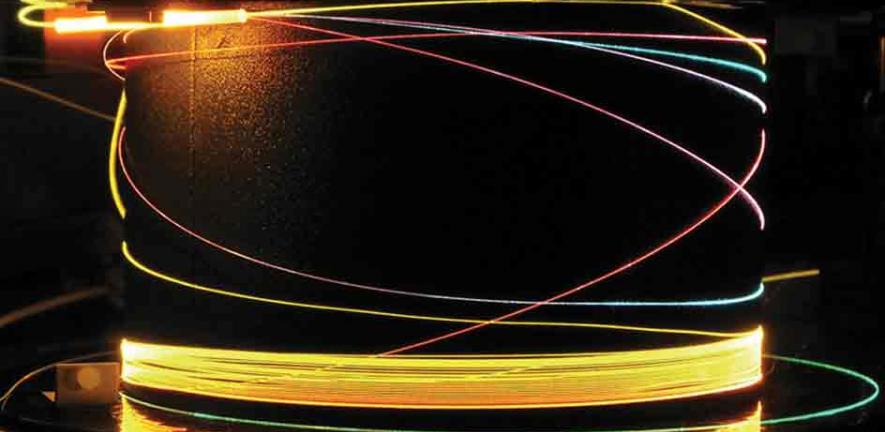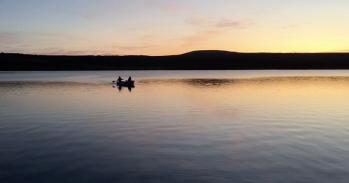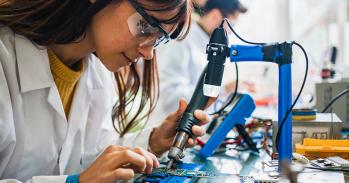
CamBridgeSens - a strategic initiative to bridge gaps across disciplines, departments and research cultures - launches this summer.
CamBridgeSens - a strategic initiative to bridge gaps across disciplines, departments and research cultures - launches this summer.
We aim to fundamentally change the way sensor research is conducted in Cambridge by creating an environment where researchers are able to explore their most adventurous and creative ideas.
Dr Clemens Kaminski
We live in a world aided by sensors – devices that measure a physical quantity, convert the measurement to a signal, and interpret and act on the result to provide real-time information about the world around us. Their uses are as diverse as the science that goes into making them: monitoring environmental change and the state of our health; enhancing process control and product assessment in industry; providing security and safety information – in short, sensors affect how we live, work and make decisions. The value of the global sensor market has passed the £100 billion mark already and market projections predict enormous future growth.
World-leading research at the University of Cambridge is pushing the limits in sensor technology – ever smaller, cheaper, more sensitive and robust – reflecting the great strengths in sensor research in the physical sciences, engineering, mathematics, computer science and technology. But to allow the quantum leaps forward that many believe are possible, it is becoming crucial to connect the disciplines and bridge the gaps. This is the goal of CamBridgeSens, a new initiative sponsored by the Engineering and Physical Sciences Research Council (EPSRC).
‘We aim to fundamentally change the way sensor research is conducted in Cambridge by creating an environment where researchers are able to explore their most adventurous and creative ideas. We also seek to connect the tremendous expertise and skills that exist here, to put us in a leading position to tackle even the most challenging problems in sensor research,’ said Dr Clemens Kaminski, of the Department of Chemical Engineering, who leads the project with Professor Lisa Hall of the Institute of Biotechnology.
From sandpits to kindergartens
A key issue in bridging disciplines is to develop a common language, as Professor Hall explained: ‘Because this initiative has at its heart a shared vision of traversing the boundaries of traditional sensor research and invoking unique interfaces between disciplines, a basis for communication needs to be achieved early enough to engage its partners and broaden the experience and appreciation of students.’
Underpinning this cross-disciplinary communication and collaboration will be a diverse group of ‘Research Ambassadors’, comprising leading researchers at Cambridge plus industrialists, all of whom are recognised world leaders in the sensor field. The programme will be managed ‘from the bottom up’ and major drivers will be future students engaging in sensor-related research. ‘The quality of the studentship at Cambridge is a great asset,’ said Dr Kaminski. ‘By enabling young researchers to realise their ideas through ‘sandpit’ brainstorming events, research competitions and secondment opportunities (as well as through offers of real cash!), radically new approaches to sensor research will emerge.’
Through a ‘kindergarten’ programme, students will receive research experience in a variety of disciplines in their first or second year. Early-career researchers will be encouraged to undertake discipline-hopping secondments and industrial exchanges, supported by Research Ambassadors promoting interactions at the grass roots.
Breaking down barriers
The scale of CamBridgeSens is ambitious: under the steerage of Dr Mica Green, coordinator of the project, at least 50 research students will participate, and 20 Research Ambassadors have agreed to provide solid foundations for what is set to become a network of international excellence.
But the implications of the initiative stretch wide and have the potential to transform the training and research culture in Cambridge. ‘By breaking down discipline barriers and creating identities between researchers with common research goals that transcend departmental affiliation,’ said Professor Ian White, Chair of the School of Technology, ‘Cambridge can play a powerful role in responding to challenging problems of the future.’
For more information about CamBridgeSens and how to participate, please visit www.sensors.cam.ac.uk/
This work is licensed under a Creative Commons Licence. If you use this content on your site please link back to this page.





